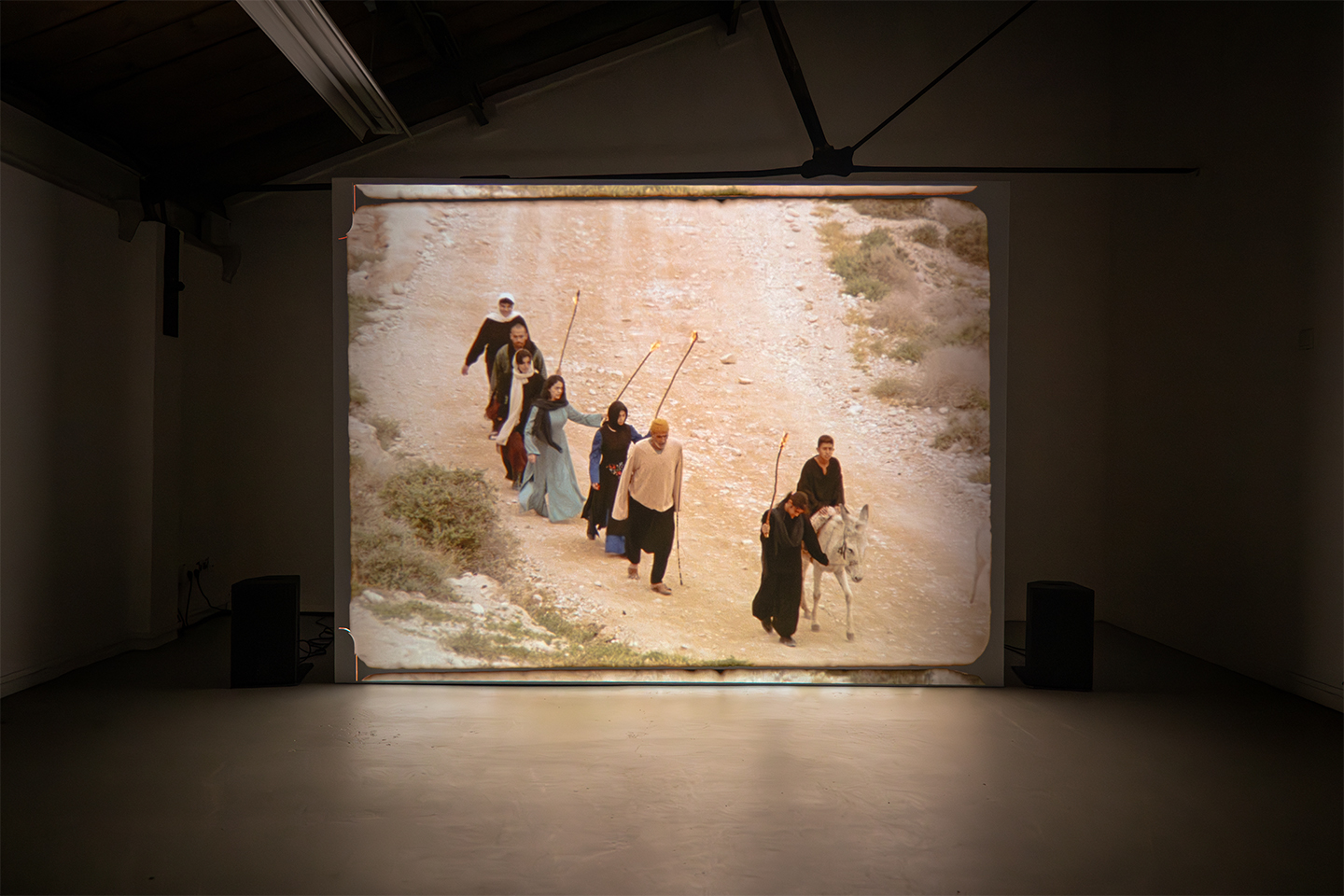The English version of this “counter-report” was published as an issue of The Nordic Journal of Aesthetics 32, no. 66 (2023) →.
See Sven Lütticken, “Counterpublics in Search of Infrastructures: Lessons from German Anti-Antisemitism,” October, no. 189 (Summer 2014).
Art and Autonomy: A Critical Reader, ed. Sven Lütticken (Afterall Books, 2022).
Robert Smithson, “A Museum of Language in the Vicinity of Art,” in The Collected Writings, ed. Jack Flam (University of California Press, 1996), first published in Art International, March 1968.
Janet Sarbanes, Letters on the Autonomy Project (Punctum Books, 2022); Paths to Autonomy, ed. Noah Bremer with Vaida Stepanovaite (Minor Compositions, 2021).
Habermas’s lecture, “Die Moderne: ein unvollendetes Projekt” (Modernity: An Incomplete Project)—first published in Die Zeit, no. 39 (September 19, 1980) and reprinted in Kleine politische Schriften I–IV (Suhrkamp, 1981)—went on to shape debates in the German-speaking world as well as the Anglosphere, through its inclusion in the volume The Anti-Aesthetic: Essays on Postmodern Culture, ed. Hal Foster (Bay Press, 1983). In French, it first appeared under the title “La modernité: un projet inachevé,” trans. Gérard Raulet, Critique, no. 413 (October 1981).
Theodor W. Adorno, “The Autonomy of Art,” in The Adorno Reader, ed. Brian O’Connor (Wiley- Blackwell, 2000).
Kerstin Stakemeier and Marina Vishmidt, Reproducing Autonomy: Work, Money, Crisis and Contemporary Art (Mute, 2016); Andrea Fraser, “From the Critique of Institutions to an Institution of Critique,” Artforum 44, no. 1 (November 2005).
Johan Huizinga, Homo Ludens: A Study of the Play-Element of Culture (Routledge & Keegan Paul, 1949).
Peter Bürger, Theorie der Avantgarde (Suhrkamp, 1974). English version: Theory of the Avant-Garde, trans. Michael Shaw (University of Minnesota Press, 1984).
Gerald Raunig, “Instituent Practices: Fleeing, Instituting, Transforming,” trans. Aileen Derieg, in Art and Contemporary Critical Practice: Reinventing Institutional Critique, ed. Gerald Raunig and Gene Ray (MayFly, 2009): 6; Raunig refers to a passage in Fraser, “From the Critique of Institutions to an Institution of Critique,” 282.
Boris Arvatov, Art and Production, ed. John Roberts and Alexei Penzin, trans. Shushan Avagyan (Pluto Press, 2017).
Zakiyyah Iman Jackson, Becoming Human: Matter and Meaning in an Antiblack World (NYU Press, 2020); Keguro Macharia, Frottage: Frictions of Intimacy across the Black Diaspora (NYU Press, 2019).
See the debate in Transgender Marxism, ed. Jules Joanne Gleeson and Elle O’Rourke (Pluto Press, 2021).
“Le droit en Occident est un droit de commande royale.” Michel Foucault, “Il faut défendre la société,” in Cours au collège de France, 1976 (Seuil/Gallimard, 1997), 23.
Het Ontwerp van Constitutie van 1797: De behandeling van het Plan van Constitutie in de Nationale Vergadering, vols. 1–3, ed. L. de Gou (Martinus Nijhoff, 1983–85).
This is not to say that reading Habermas cannot be illuminating. In Strukturwandel der Öffentlichkeit, he does make the connection between private property, autonomous “Privatleute” (without discussing class, gender, or race), and the commodification of art as a prerequisite for art as a subject of public discourse: “Die Privatleute, denen das Werk als Ware zugänglich wird, profanieren es, indem sie autonom, auf dem Weg der rationalen Verständigung untereinander, seinen Sinn suchen.” Habermas, Strukturwandel der Öffentlichkeit: Untersuchungen zu einer Kategorie der bürgerlichen Gesellschaft (Suhrkamp, 1990; 1st ed., 1962), 98; the text is available in English as The Structural Transformation of the Public Sphere: An Inquiry into a Category of Bourgeois Society, trans. Thomas Burger (Polity, 1989).
Achille Mbembe, Necropolitics, trans. Steven Corcoran (Duke University Press, 2019): 67. The reference is to the titular essay, which constitutes chapter 3.
Rachel Aroesti, “Andrew Tate: The Man Who Groomed the World? Review—the Revelations in This Excellent Exposé Are a Major Coup” The Guardian, August 31, 2023 →.
James C. Scott, The Art of Not Being Governed: An Anarchist History of Upland Southeast Asia (Yale University Press, 2009); Pierre Clastres, Society against the State, trans. Robert Hurley (Urizen Books, 1977); David Graeber and David Wengrow, The Dawn of Everything: A New History of Humanity (Allen Lane, 2021).
On “structures of feeling,” see Raymond Williams and Michael Orrom, Preface to Film (Film Drama Limited, 1954); and Raymond Williams, The Long Revolution (Chatto and Windus, 1961).
Naomi Klein, Doppelganger: A Trip into the Mirror World (Allen Lane, 2023).
This slogan was central to the 1995 Autonomie-Kongreß in Berlin and in turn an important reference for that year’s counter–art fair Messe 2ok in Cologne. On a side note, the role of German autonomist circles in the rise of the militantly pro-Zionist antideutsche ideology should not be underestimated.
The Diversity of Aesthetics series is coordinated by Andreas Petrossiants and Jose Rosales. Editions so far have included Inside and Outside: Infrastructures of Critique, Foreigners Everywhere, and Looting.
Jean-Paul Sartre, Critique de la raison dialectique (Gallimard, 1960), first published in English as Critique of Dialectical Reason, trans. Alan Sheridan-Smith (New Left Books, 1976).
Raunig, “Instituent Practices,” 11.
Not An Alternative, “Institutional Liberation,” e-flux journal, no. 77 (November 2016) →.
Fredric Jameson, Postmodernism, or The Cultural Logic of Late Capitalism (Duke University Press, 1991), 48.
Natascha Sadr Haghighian, What I Do Not Yet Recognize, Now at This Very Moment (Harun Farocki Institut, 2023), 9.
Sadr Haghighian, What I Do Not Yet Recognize, 15; Forensic Architecture, “The Murder of Halit Yozgat,” last updated October 17, 2019 →.
Sadr Haghighian, What I Do Not Yet Recognize, 15.
